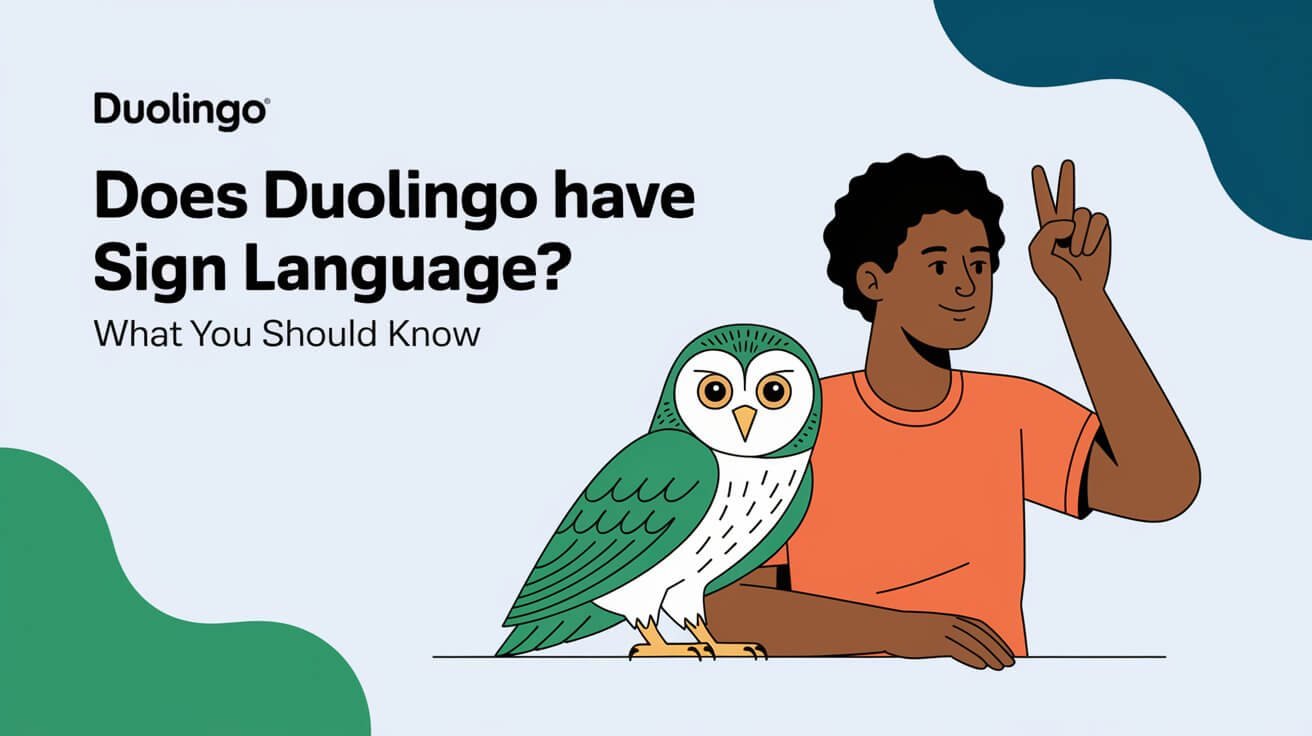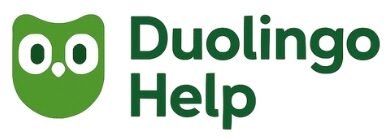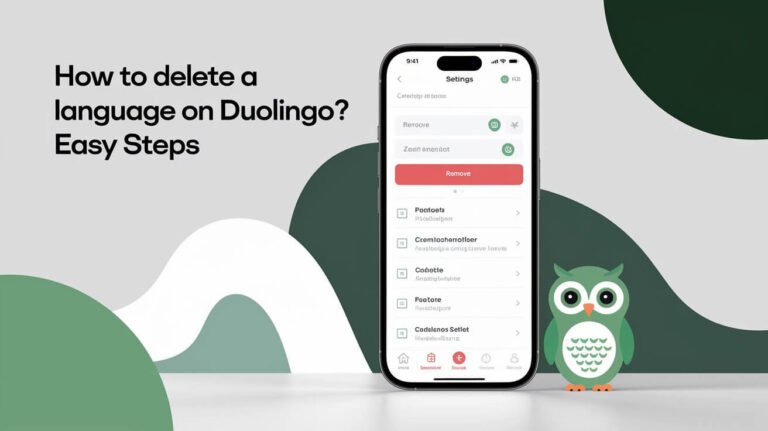
Duolingo has revolutionized the way people learn new languages, but American Sign Language (ASL) is noticeably absent from its course offerings.
For those interested in learning ASL, this absence is significant. While Duolingo excels at teaching spoken languages, the Deaf community relies on sign language for communication. Fortunately, alternative platforms have stepped in to fill this gap, providing ASL courses and resources.
Learners can now explore various options beyond Duolingo to acquire ASL skills. This introduction sets the stage for discovering these alternatives and understanding their benefits.
Key Takeaways
- Duolingo does not currently offer ASL courses.
- Alternative apps provide ASL learning opportunities.
- These alternatives offer a range of ASL courses and resources.
- Learners can explore various options to acquire ASL skills.
- The Deaf community relies heavily on ASL for communication.
Duolingo’s Current Language Catalog
Duolingo has established itself as a leading language learning platform, offering a diverse catalog of languages to its users. The platform’s extensive range of languages is a significant factor in its popularity among language learners worldwide.
Available Languages on the Platform in 2023
As of 2023, Duolingo offers courses in over 30 languages, including Spanish, French, German, Italian, and many others. The platform continues to expand its offerings, ensuring that users have access to a broad spectrum of linguistic options.
The variety of languages available on Duolingo caters to different interests and needs, whether users are looking to learn a widely spoken language or explore a less common one. This diversity is a testament to Duolingo’s commitment to making language learning accessible.
Recent Additions to the Duolingo Curriculum
Duolingo regularly updates its curriculum with new languages and courses. Some of the recent additions include languages such as Welsh, Irish, and Hawaiian, reflecting the platform’s effort to include diverse linguistic heritage.
Recent Language Additions:
- Welsh
- Irish
- Hawaiian
- Others
| Language | Course Level | Estimated Completion Time |
|---|---|---|
| Spanish | Beginner to Advanced | 30-60 hours |
| French | Beginner to Intermediate | 25-50 hours |
| Welsh | Beginner | 20-40 hours |
Does Duolingo Have Sign Language? The Straight Facts
As the world’s most popular language-learning app, Duolingo is often asked if it offers sign language courses. The demand for sign language education is growing, and users are eager to know if Duolingo has plans to introduce American Sign Language (ASL) or other sign languages.
Official Position on ASL and Other Sign Languages
Duolingo has not officially released a statement confirming the inclusion of sign language in its curriculum. However, the company’s stance on ASL and other sign languages can be inferred from their language addition criteria, which prioritize languages with a significant user demand and available learning resources.
Company Statements About Sign Language Courses
Although Duolingo hasn’t made any definitive statements about sign language courses, the company has shown willingness to expand its language offerings based on user feedback. While there’s no concrete evidence of ASL being added soon, users can submit requests for new languages through Duolingo’s feedback channels.
It’s worth noting that while Duolingo doesn’t currently offer sign language courses, there are alternative learning platforms that provide ASL and other sign language education. Duolingo’s stance on ASL is largely influenced by the complexity of teaching a visual language through a platform primarily designed for spoken languages.
Why Sign Language Isn’t on Duolingo Yet
Duolingo’s vast language catalog doesn’t currently include sign languages, sparking curiosity about the reasons behind this omission. The absence of sign language courses on the platform can be attributed to several factors.
Technical Barriers for Visual Language Recognition
One of the primary challenges is the technical difficulty in recognizing and processing visual languages. Unlike spoken languages, sign languages require advanced computer vision capabilities to accurately interpret handshapes, facial expressions, and body language.
Key technical challenges include:
- Developing algorithms that can accurately recognize and interpret sign language gestures
- Creating a comprehensive dataset of sign language videos for training AI models
- Ensuring the platform can handle the nuances of sign language, such as regional variations and contextual expressions
Development Priorities and Resource Allocation
Another significant factor is Duolingo’s development priorities and resource allocation. The company must weigh the demand for sign language courses against other language learning needs and technological capabilities.
| Development Priority | Resource Allocation | Sign Language Challenges |
|---|---|---|
| Enhancing existing language courses | Significant resources dedicated to improving spoken language learning | Limited resources available for sign language development |
| Expanding into new language markets | Resources allocated based on market demand and feasibility | Sign language requires specialized development and technical expertise |
By understanding these challenges, we can better appreciate the complexities involved in introducing sign language courses on Duolingo.
Public Interest in Sign Language Courses
As awareness about sign language grows, so does the demand for accessible learning platforms. The inclusion of sign language courses on popular language learning apps like Duolingo has become a topic of significant interest.
User Requests and Community Campaigns
Duolingo users have been vocal about their desire for sign language courses, with many taking to the app’s forums and feedback channels to express their interest. The sign language community has been actively advocating for its inclusion, highlighting the importance of accessible language learning tools.
Social Media Discussions About Sign Language on Duolingo
Social media platforms are abuzz with discussions about the need for sign language courses on Duolingo. Users are leveraging these channels to raise awareness and garner support, demonstrating a strong user demand for ASL and other sign languages. These social media discussions underscore the community’s enthusiasm and commitment to making sign language more accessible.
How Sign Languages Differ From Spoken Languages
One of the most fascinating aspects of sign languages is their ability to convey complex ideas through visual and spatial expressions. Unlike spoken languages that rely on auditory signals, sign languages utilize handshapes, facial expressions, and body language to communicate.
Structural Differences in ASL vs. Written Languages
American Sign Language (ASL) has a distinct grammatical structure that differs significantly from written English. For instance, ASL uses a subject-object-verb word order, and it incorporates non-manual markers like facial expressions to convey tense and emotion. This unique syntax allows ASL to convey nuanced ideas and emotions effectively.
The visual nature of ASL also means that it can convey multiple pieces of information simultaneously, such as through the use of handshapes and facial expressions. This is in contrast to written languages, where information is conveyed linearly through text.
Regional Variations in Sign Languages Worldwide
Just like spoken languages, sign languages have regional variations. For example, British Sign Language (BSL) and ASL are distinct and not mutually intelligible, despite both being used in English-speaking countries. Similarly, there are variations within countries, with different signs and dialects used in different regions.
Understanding these regional sign language variations is crucial for effective communication and for developing sign language learning resources that are relevant to diverse user bases.
Best Apps for Learning American Sign Language
With the rise of mobile apps, learning ASL has become more convenient than ever, offering a range of interactive and comprehensive courses. For individuals looking to learn ASL, several top-rated apps stand out for their effectiveness and user-friendly interfaces.
Top-Rated ASL Learning Applications
Some of the most highly rated ASL learning apps include ASL Bloom, Rocket Sign Language, and Lingvano. ASL Bloom is praised for its comprehensive lessons and interactive exercises, making it an ideal choice for beginners. Rocket Sign Language offers a structured learning path with a focus on practical sign language usage. Meanwhile, Lingvano is known for its engaging video content and interactive quizzes.
Features That Make These Apps Effective
The effectiveness of these ASL learning apps can be attributed to several key features. Firstly, they offer interactive lessons that engage learners and promote active learning. Many of these apps also include video-based content, allowing users to see and mimic signs accurately. Additionally, features like quizzes and progress tracking help learners assess their understanding and stay motivated.
When choosing an ASL learning app, consider what features are most important to your learning style. Whether it’s interactive exercises, video content, or progress tracking, there’s an app available to suit your needs.
Apps for Learning Other Sign Languages Globally
For those interested in learning sign languages beyond American Sign Language (ASL), several apps cater to a global audience. Sign languages vary significantly across different regions, and having the right resources is crucial for effective learning.
British Sign Language (BSL) Resources
British Sign Language (BSL) is used in the UK, and there are several apps designed to teach BSL. Some popular options include:
- BSL Dictionary: An app that provides a comprehensive dictionary of BSL signs.
- BSL Course: Offers structured lessons for beginners and intermediate learners.
Apps for Auslan, JSL, and Other Sign Languages
Auslan (Australian Sign Language) and JSL (Japanese Sign Language) are other prominent sign languages with dedicated learning apps.
| Sign Language | App Name | Description |
|---|---|---|
| Auslan | Auslan Sign Language | Provides video tutorials and practice exercises for learning Auslan. |
| JSL | JSL Dictionary | A comprehensive dictionary for JSL, including video examples. |
| LIS (Italian Sign Language) | Lingua dei Segni Italiana | Offers lessons and resources for learning LIS. |
These apps demonstrate the growing availability of resources for learning various sign languages, making it easier for individuals worldwide to access sign language education.
Free Sign Language Learning Resources Online
Learning sign language has become more accessible thanks to a variety of free online resources. Whether you’re a beginner or looking to improve your skills, these resources can be incredibly helpful.
Video Dictionaries and Tutorial Libraries
One of the most effective ways to learn sign language is through visual aids. Video dictionaries are an excellent resource, offering a comprehensive collection of signs with clear video demonstrations. Some popular video dictionary platforms include:
- Signing Savvy: Offers a vast library of signs with detailed explanations.
- LifePrint: Provides a wide range of ASL resources, including video tutorials.
- Spread the Sign: A multilingual sign language dictionary with videos from various countries.
Community-Based Learning Platforms
Community-based platforms are another valuable resource for learning sign language. These platforms connect learners with native signers and the Deaf community, providing an immersive learning experience. Some notable platforms include:
- Sign Language Forum: An online community where you can ask questions and practice with other learners.
- Reddit’s r/SignLanguage: A subreddit dedicated to sign language learning and discussion.
- Facebook Groups for Sign Language Learners: Various groups where you can connect with others learning sign language.
These free online resources make it easier than ever to start or continue your sign language learning journey. By leveraging video dictionaries, tutorial libraries, and community-based platforms, you can gain a deeper understanding and proficiency in sign language.
Sign Language and Deaf Culture Awareness
Sign language is not just about vocabulary; it’s deeply rooted in Deaf culture. Understanding this culture is essential for effective and respectful communication with Deaf individuals.
Cultural Context Beyond Vocabulary
Deaf culture encompasses a rich history, social norms, and community values that are distinct from those associated with spoken languages. Learning sign language should therefore include an exploration of this cultural context to foster deeper understanding and connection.
For instance, Deaf culture places a strong emphasis on visual storytelling and community gatherings, which are integral to the preservation and transmission of cultural values. Understanding these aspects can enhance one’s appreciation of sign language beyond its functional use.
Etiquette When Communicating with Deaf Individuals
When interacting with Deaf individuals, certain etiquette guidelines can facilitate smoother and more respectful communication. For example, it’s considered polite to maintain eye contact and to use the correct sign language syntax.
| Etiquette Tip | Description |
|---|---|
| Eye Contact | Maintain direct eye contact to show respect and engagement. |
| Sign Language Syntax | Use the correct grammatical structure when signing to convey your message clearly. |
| Visual Attention | Ensure you have the Deaf person’s attention before starting to sign. |
Being mindful of these cultural nuances and etiquette guidelines, learners of sign language can demonstrate their respect for Deaf culture and community.
Potential Timeline for Sign Language on Duolingo
With advancements in technology and a surge in user demand, the future of sign language on Duolingo is a prospect worth exploring.
Technology Advancements Needed
For sign language to be effectively integrated into Duolingo, significant technological advancements are required. These include the development of sophisticated visual recognition technology that can accurately interpret and assess sign language gestures. Currently, Duolingo’s platform is primarily designed for spoken and written languages, and adapting it to accommodate the visual nature of sign language poses a considerable technical challenge.
Hints From Duolingo About Future Plans
While Duolingo has not made any definitive announcements about including sign language in its curriculum, there have been hints from the company about exploring new and innovative ways to expand its language offerings. User demand and feedback play a crucial role in influencing Duolingo’s future plans, and the interest in sign language courses has been evident through various community campaigns and discussions.
| Factor | Current Status | Potential Impact |
|---|---|---|
| Technological Advancements | Developing visual recognition tech | High |
| User Demand | Increasing campaigns and feedback | High |
| Duolingo’s Expansion Strategy | Exploring new languages and methods | Medium |
The inclusion of sign language on Duolingo is contingent upon overcoming the technical barriers associated with visual language recognition and the company’s strategic priorities. As technology continues to advance and user demand remains strong, there is a plausible case for sign language to be considered in Duolingo’s future plans.
How to Suggest New Languages to Duolingo
Duolingo’s language catalog is vast, but there’s always room for more – here’s how you can suggest a new language. The platform is open to adding new languages based on user demand and feasibility.
Official Feedback Channels
To suggest a new language, users can utilize Duolingo’s official feedback mechanisms. The primary method is through the Duolingo forums or the app’s feedback system.
- Duolingo Forums: Users can post on the Duolingo forums under the “Incubator” section, where new language suggestions are discussed.
- In-App Feedback: Users can submit their suggestions directly through the app by reporting an issue or providing feedback.
Past Examples of Successfully Added Languages
Several languages have been added to Duolingo based on user requests. For instance, languages like Welsh, Hawaiian, and Navajo have been incorporated into the platform.
| Language | Year Added | Reason for Addition |
|---|---|---|
| Welsh | 2019 | User demand and cultural significance |
| Hawaiian | 2020 | Community support and language preservation efforts |
| Navajo | 2021 | User requests and efforts to preserve indigenous languages |
Using these official channels and demonstrating community support, users can increase the likelihood of their preferred language being added to Duolingo.
Conclusion
While Duolingo remains a popular language learning platform, it currently doesn’t offer sign language courses. However, this doesn’t mean that learning sign language is impossible. Various alternative platforms and resources are available for those interested in sign language learning.
Several apps, such as those reviewed in our discussion on best apps for learning American Sign Language, provide comprehensive lessons and interactive exercises. Additionally, free online resources, including video dictionaries and community-based learning platforms, can supplement your learning journey.
As technology continues to evolve, we may see sign language being incorporated into popular language learning platforms like Duolingo. Until then, exploring Duolingo alternatives for sign language learning can be a valuable step towards becoming proficient in this unique and important form of communication.
Top Questions
Does Duolingo offer sign language courses?
Currently, Duolingo does not offer sign language courses, including American Sign Language (ASL).
What languages does Duolingo currently support?
Duolingo offers a wide range of spoken languages, including Spanish, French, German, Italian, and many others, with new languages being added regularly.
Has Duolingo made any statements about adding sign language courses?
While Duolingo hasn’t made any definitive statements about adding sign language, the company is open to user feedback and suggestions for new languages.
Why doesn’t Duolingo offer sign language courses?
The main reasons include technical challenges, such as developing visual language recognition technology, and the company’s current development priorities.
Are there other apps that offer sign language courses?
Yes, there are several apps and resources available for learning sign languages, including ASL, BSL, Auslan, and JSL.
What are some key differences between sign languages and spoken languages?
Sign languages have their own unique grammar, vocabulary, and syntax, and are not simply visual representations of spoken languages.
How can I suggest new languages to Duolingo?
You can suggest new languages through Duolingo’s official feedback channels, such as their support page or community forums.
Are there any free online resources for learning sign language?
Yes, there are many free online resources, including video dictionaries, tutorial libraries, and community-based learning platforms.
Why is understanding Deaf culture important when learning sign language?
Understanding Deaf culture is crucial for effective communication and building respectful relationships with Deaf individuals.
Will Duolingo ever offer sign language courses?
While there’s no definitive timeline, advancements in technology and user demand may potentially lead to the inclusion of sign language courses on Duolingo in the future.
What are some top-rated ASL learning apps?
Some top-rated ASL learning apps include those that offer interactive lessons, video tutorials, and community features.
Can I learn other sign languages besides ASL on these alternative apps?
Yes, many apps and resources cater to a global audience, offering courses in various sign languages, including BSL, Auslan, and JSL.






